I’m an advocate of social media. In particular, I talk about its use from a customer service and user experience perspective.
But I also know and appreciate that business owners want tangible results from their efforts and marketer’s jobs rely on getting results.
‘Delighting customers’ is just one destination on the social media journey.
In this post I outline the five stages on the social media map. A simple, top-level process, to help you structure your social activities and increase your chances of ongoing success.
The social media strategy map
Let’s plot our course from creating awareness to inspiring advocacy, using a real world example just 3-months in the making.
What you’ll learn:
- The complete customer journey
- Social media marketing tactics for each step
- The metrics that matter
- And the business results, in real terms – revenue!
What you’ll produce (aside from the results, of course), a map of your strategy:

I understand a lot of people are looking for social media marketing tips are also less likely to be enterprise level businesses.
Therefore I’ve got a success story that comes from a humble beginning, doesn’t shout about a billion visits and quadrillion dollars in mere seconds, and I’d like to think proves that no matter your size or budget – you too, can make it work.
Even so, this plan will scale to practically any size business.
The case study subject
Enter stage left our case study subject, a small circa $1,000,000 turnover 3D printing retailer called Technology Outlet.
The platforms we used are Twitter and Facebook. Why?
We like Facebook because of its large audience and powerful targeting. We like Twitter because – well – we’re good at it, and we know how to make it work.
Let’s look at the starting numbers, which were miserable:
27 followers on Twitter.
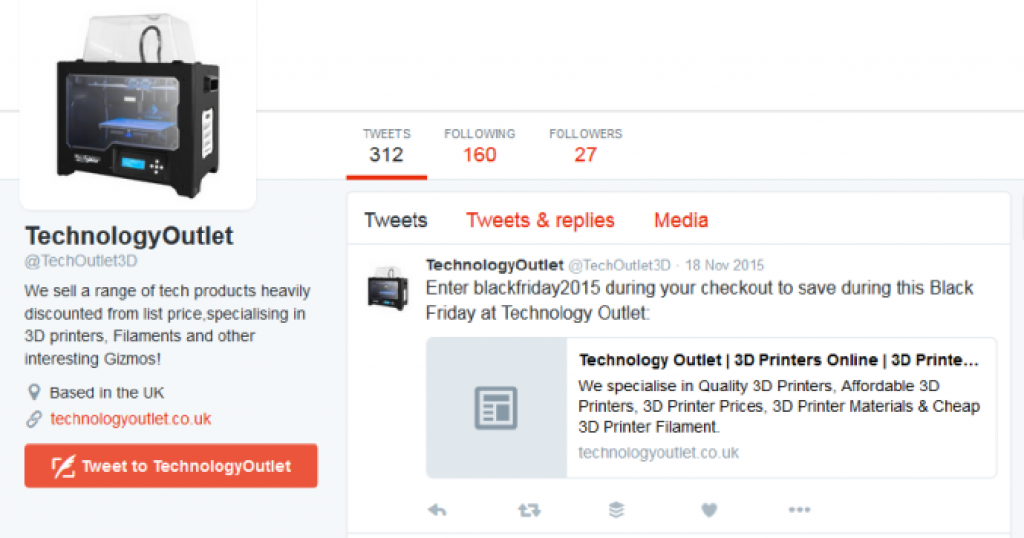
72 people like this (1 of those being me).
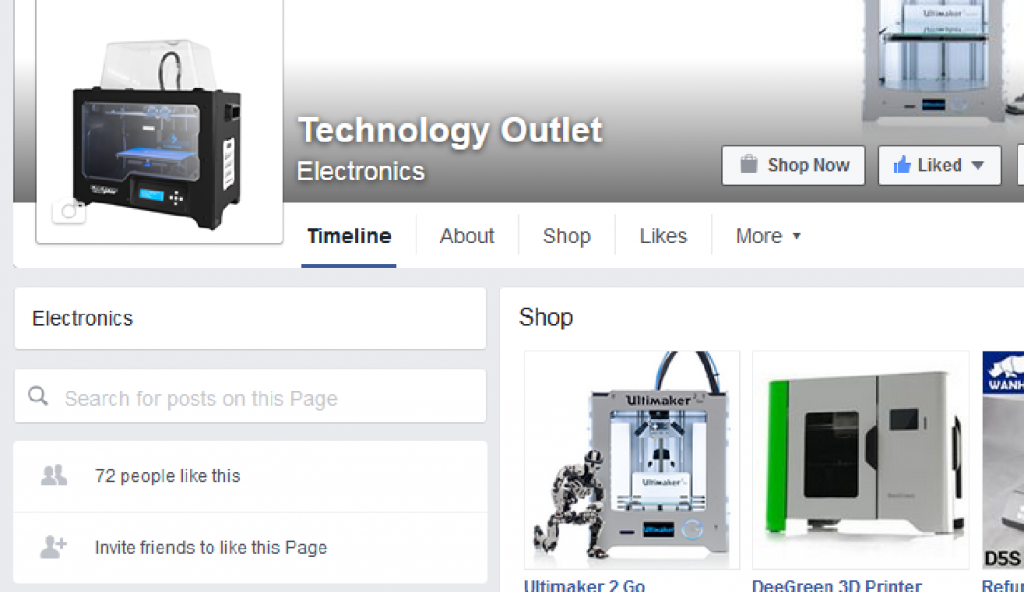
Social media-driven traffic wasn’t much better:
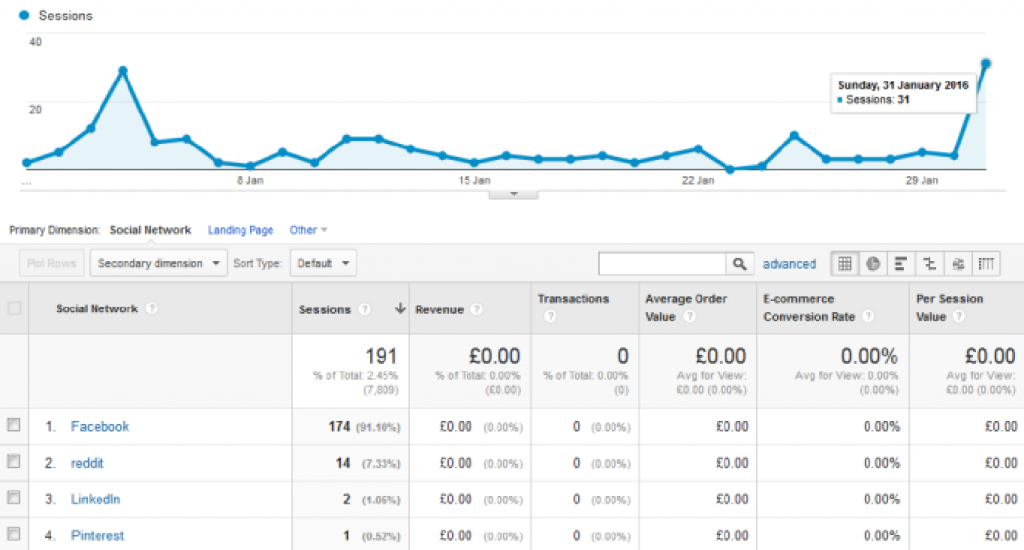
And revenue?
Zilch. Zip. Nada. Nowt… nothing.
Before this gets too depressing, let’s hit the road and show you how we fixed this…
1. Built awareness – respect thy audience
The simplest aspect of the journey is building brand awareness. It’s also tricky to meaningfully measure and often carries the least value in terms of business understanding – “What does a ‘like’ achieve for my bottom line?”
Just building awareness, for the sake of awareness, is a resource-intensive proposition.
The problem with social media is noise; people are getting harder to reach. What do I mean? Twitter is a stampede of tweets and information, and Facebook is more difficult than ever to generate organic reach, to name just two.
As marketers, we must treat our new audiences with respect – the initial content you post will be the prelude to someone either tuning in or turning off.
Therefore, at the awareness stage I would highly recommend you avoid self-promotional content.
That means no mention of sales in sight.
Instead we want to ingratiate your brand with your new audience.
The awareness stage metrics
It’s not just about impressions or engagement…
Engagement gets a lot of flak for being a bit woolly. After all, on the surface 1,000 ‘likes’ might look impressive, but not if 1 million people saw the post. We could look at share of voice – but that too can be easily manipulated, and is even more of a vanity metric.
The better option is your engagement rate. The percentage of engagements based on exposure (impressions).
When people engage with brands, they’re indicating more than casual interest. Understanding that level of engagement and interest versus total exposure is a solid metric.
This is all well and good, but let’s put it into practice:
Awareness competition
Everyone likes to win something, right? We ran a competition on Tech Outlet’s best-selling product, an entry-level 3D printer:

A pretty interesting and valuable prize, emphasized by the subsequent engagement seen on each related post.
To give the new page some legs, we created a custom audience to suit and threw a little Facebook ad spend at it. The total spend for the period was £244.59 (around $340). The results were compelling:
Engagement
- Total reach = 89,530 (14,872 organic)
- Total clicks = 3,345
- Total engagements (reactions, comments, shares) = 1,167

Twitter growth from competition
- Tweets = 278
- Twitter followers = 377
Data capture via competition
- Total entries = 1,377 emails captured
- Cost per click? 7p
- Cost per engagement? 17p
- Cost per email captured? Just 18 pence each.
Negative sentiment
We did a good job on targeting – 0 spam reports, and 5 negatives (post hidden) out of nearly 90K impressions!
Now, as this blog post goes live we’ve yet to see the knock-on value of these emails. But considering the average order size, we’re confident of multiple returns here.
Get topical
Unfortunately, the client didn’t have an active blog, so we curated some useful content from around the web. This content related to and resonated with their product offering, providing informational or entertainment value.
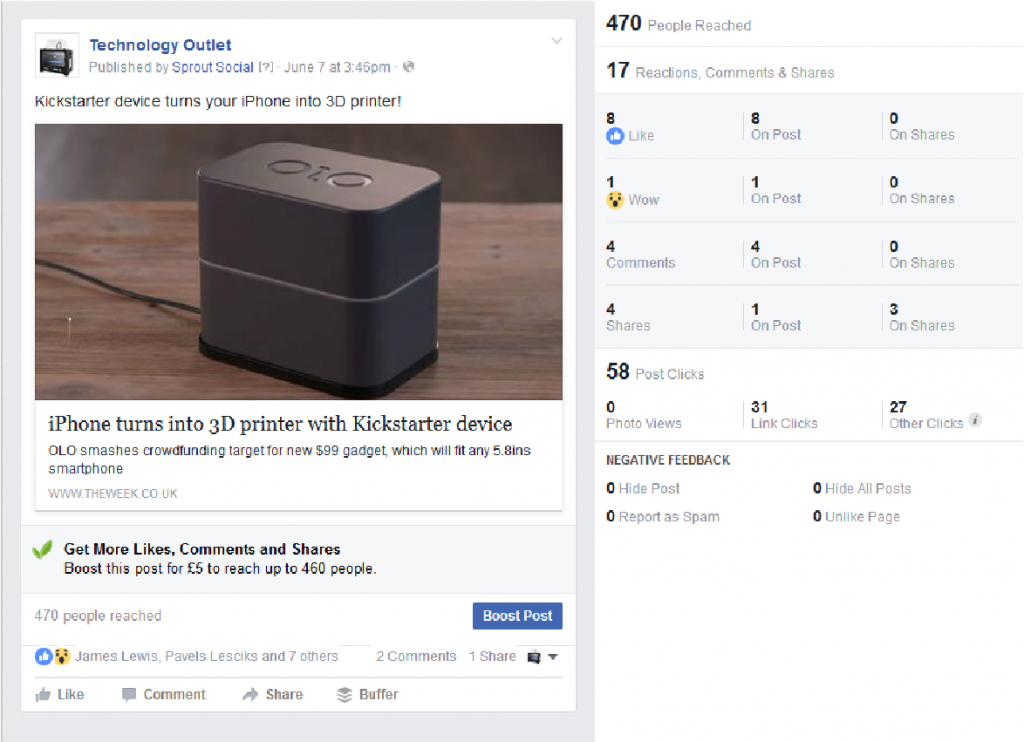
Tech Outlet’s following on Twitter was modest but growing fast, and with relevant hashtag injection we gained a decent uplift in engagement. More notably, this also introduced new traffic to the website.

What about wastage?
Don’t want all those reactions going to waste? A nifty little Facebook trick is to click your total reactions and invite each person one-by-one to like your page.
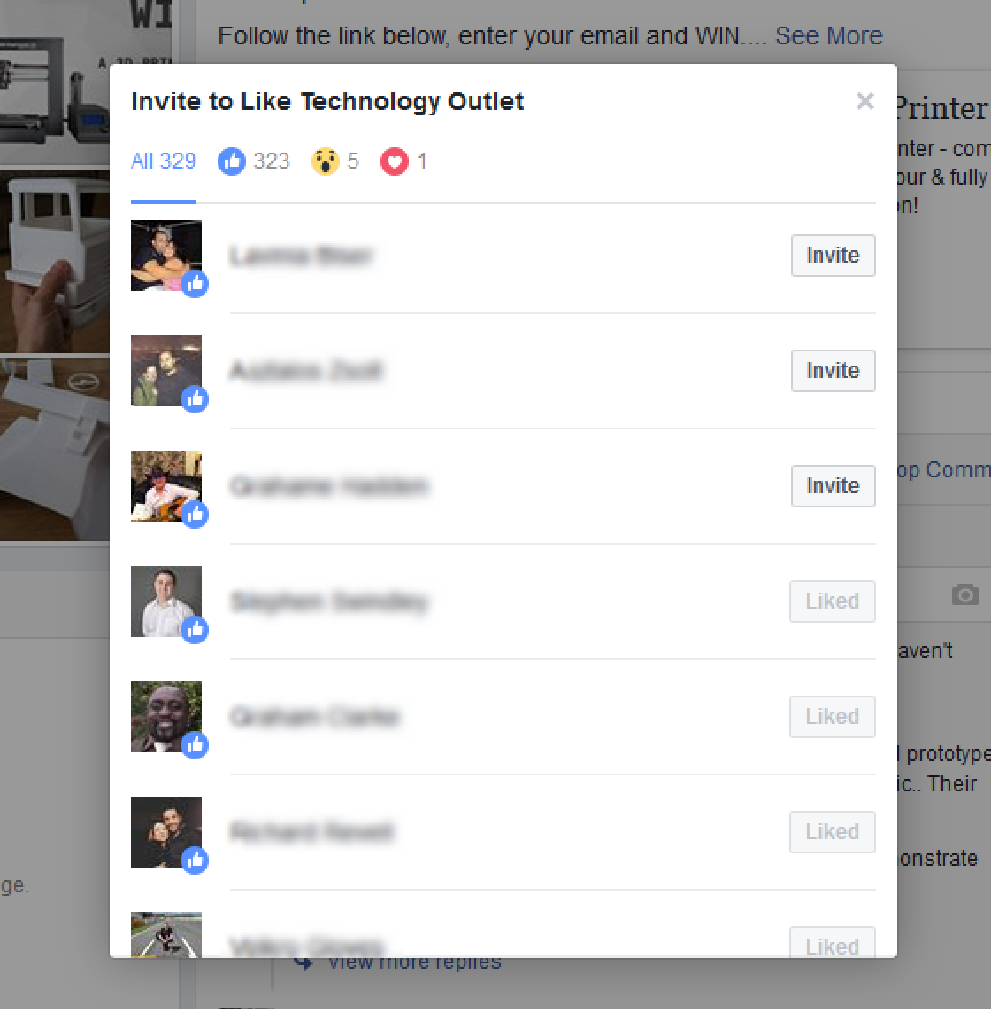
We see around a 20-30% uptake in this, so up to 300 new likes for every 1,000 engagements.
I’ll take that!
2. Generated demand
The demand generation phase of social media is where we start looking at engagement as a way to drive traffic to the website, by intertwining branded content.
It can feel a little like awareness and indeed there’s cross-over, but the important metric at this stage is traffic to your website from your social updates.
Consider how many and what type of engagements are lending themselves to clicks and driving visitors.
Intersperse branded content
We used a few key elements in our social media plan, which mainly focused around Facebook ads and audiences supported by Twitter organic reach.
Facebook knows what you did last summer… and who you’ve been stalking.
I’m just kidding.
Or am I?
Either way, their behavioral data is a bounty of low-hanging fruit for advertisers who are selective and savvy with the targeting options.
Pay (a little) to play
Here’s the outline for quick custom audiences that won’t flop.
Or in other words – avoid a flop by using the powerful tools at your disposal:
- Use customer emails, upload them to Facebook audience’s manager
- Use remarketing audiences, by placing a tracking pixel on your website
- Use lookalikes, built off the above two audiences
If you don’t have customer emails or have yet to implement your Facebook tracking pixel, then fear not.
Your fourth option is to create a custom audience by selecting age range, location, demographics and behaviors.
With so many options available, where to start with custom audiences can be daunting. Your analytics data is your friend here.
If you have ecommerce tracking enabled or conversion tracking setup, you can look at your geographic and performance data to understand which segments perform best.
You will find areas of the country and age ranges that convert better than others. Combine this information with topical data such as people interested in industry publications, industry experts, and competitor pages, and you’ll have a solid footing to test ads.
But first, a quick custom audience lesson. Don’t be these guys:
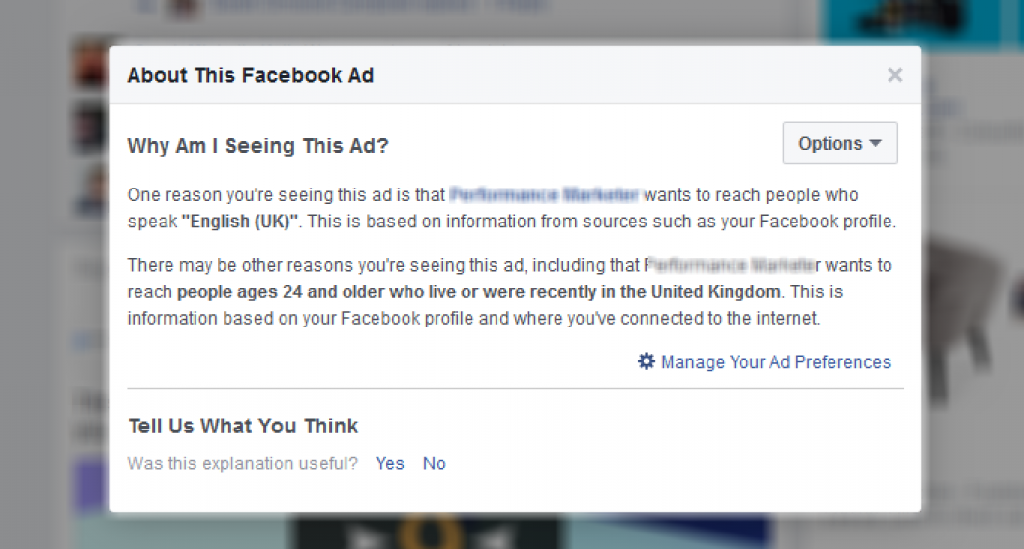
They’re targeting a relatively niche ‘marketing’ product at every-single-English-speaking-person in the UK, of the age 24 and older.
Seriously?
That’s how to kill your click-through rate, annoy people, and take a relevance slap from Facebook, which in turn increases cost per click – not the way to go!
With patience, the right way pays
Use your new Facebook audiences to boost post exposure and drive engagement. Remember the metric here is clicks to your site; more clicks often equate to increased engagement, and visits to your website are more eyes on your product.
In addition, these visits also start to top-up your remarketing audience too. That’s a win-win scenario.
3. Transaction – show me the money
We’re building impressions and engagement, visits to the website are slowly building. Now what?
It’s direct product promotion time – and remaining cautious – at this stage we dangled a toe in the water.
The “dip a toe” offer
We used a try “before you buy” offer, because product trials work. They’re low risk, low commitment, and they don’t have to be free to be effective.
Tech Outlet offers a printing hub facility where customers can upload their own design, and it gets printed in their color of choice and sent to them days later.
All for a modest sum around 10% the cost of the cheapest printer for sale.
Here’s the offer using the carousel advert option:

Just £10 to a lookalike audience achieved 51 engagements, 147 post clicks and 94 clicks to the website. 10 pence per click is cheap, especially this targeted.
But did they purchase?
Okay, that’s all well and good – even at this early stage we’re seeing lots of engagement. But what does all this social activity actually mean in terms of revenue?
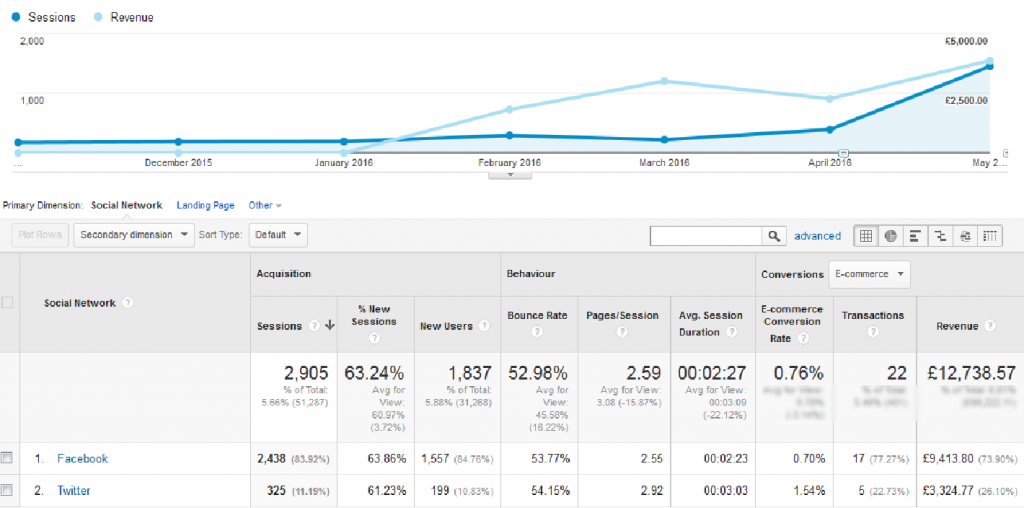
These numbers aren’t going to set the world on fire, sure. However, remember that this social media campaign has only been running for 3 months at this stage.
In addition, that’s last-click attribution, i.e. sales driven directly from social, what about traffic that visited from social and therefore assisted sales?

Nearly another £12,000 in revenue.
Total ad spend on Facebook was under £500 ($700).
Total revenue was (with assists) ~£24,000 ($35,000).
I’ll take that, especially as the trend is going up!
We anticipate these numbers doubling again over the next quarter – compounding our efforts and returning in excess of £15,000 per month just from social media traffic.
Who says social media doesn’t drive sales for small business?
Before we crack open the champagne, we need to remember that a social media marketing strategy doesn’t stop at mere sales…
4. Adoption of your brand
The purpose of the adoption stage is to make existing fans and customers feel good about being, fans and customers. It increases brand loyalty.
We’re looking to drive further engagement through answering customer questions and queries, offering after-sales support via social channels and just generally being timely to respond to our new audience.
Adoption comes full-circle on the initial awareness phase, working hand in hand. Where awareness is driving new eyeballs to you, adoption is about keeping and delighting the audience you’ve built up.
Invite opinions from new followers
What do they say about opinions? We all have one!
The release of a new logo and branding offered a prime opportunity to ask the newly built audience for their opinion – simple, but effective:
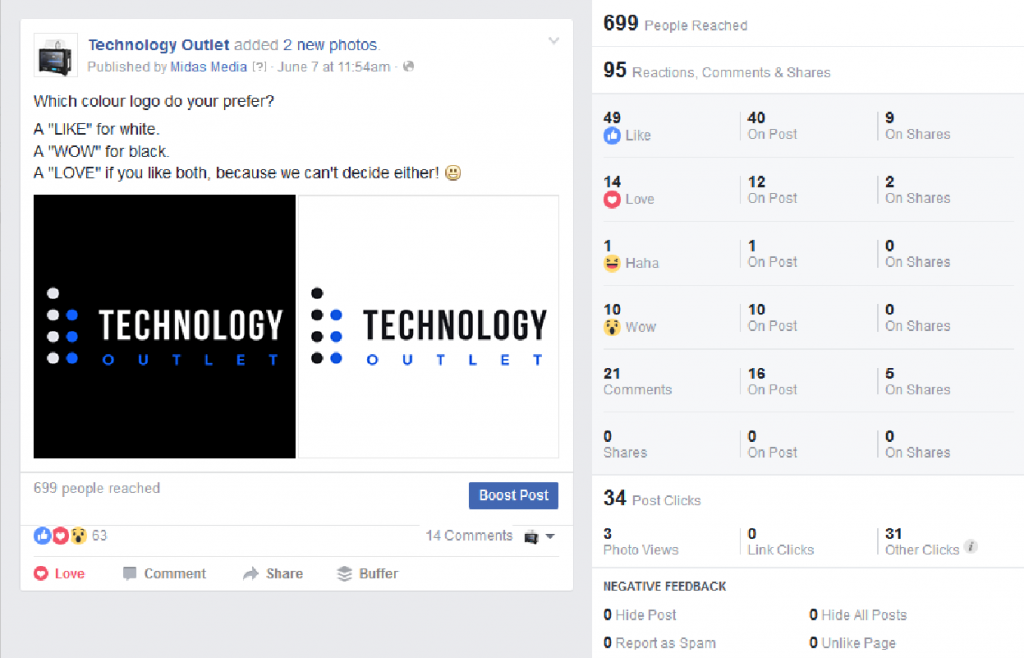
With a reach of 699 people – 14 comments and 63 reactions in just 24 hours from a brand who barely touches 1,000 page likes – who said organic reach on Facebook was dead?
The metric that matters at this stage is satisfaction, or as it’s often called, sentiment. The swing of positive versus negative comments and engagements can make or break your social media success.
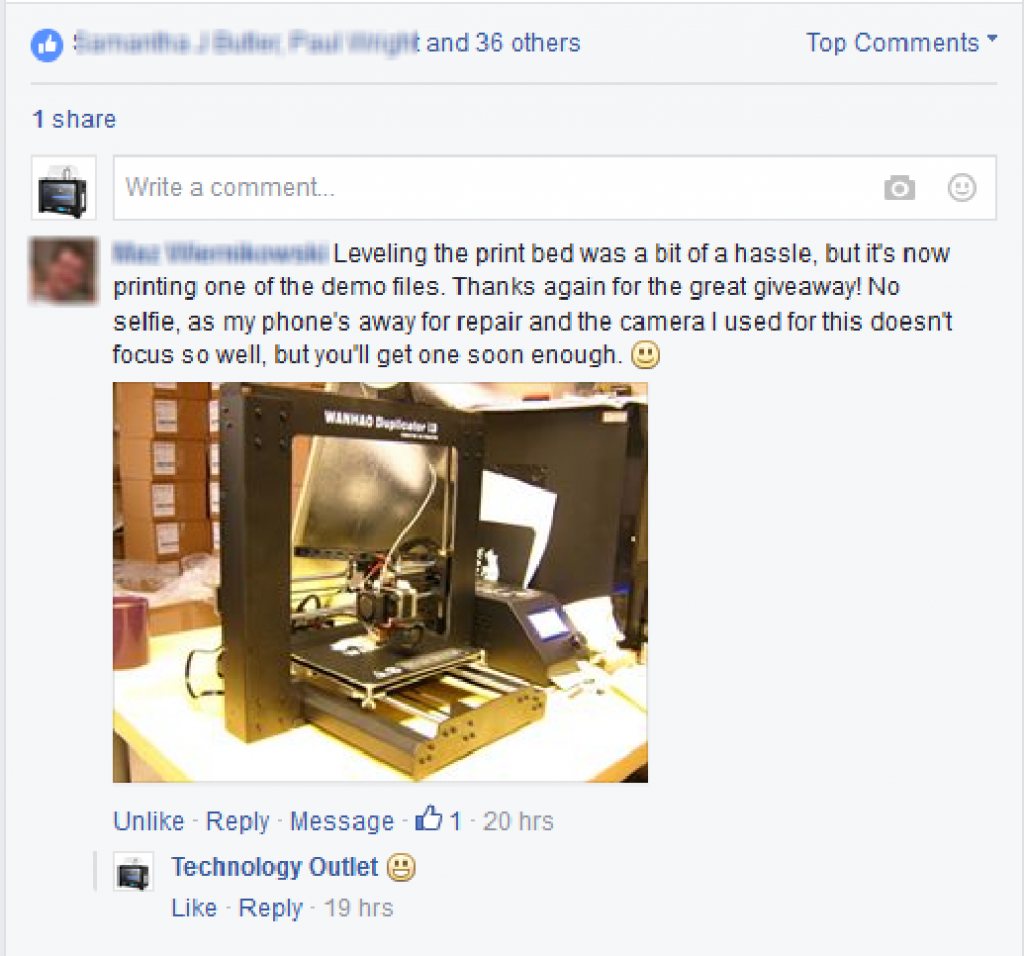
The simplest way to stifle adoption is to become overzealous with your promotional posts. We set expectations early on by committing to no more than 20% branded, directly promotional posts.
Stick to that rule and people won’t tire of you.
Always consider why people are on social networks in the first place; respect their space and retain their trust by sharing interesting and insightful information that they’ll want to read and engage with.

In doing so, they’ll allow you to push more promotional pieces to them.
Remember: their terms – not yours.
5. Advocacy – the ultimate win
The toughest part of the map to discover is positive word of mouth and evangelism.
When every element aligns, you will inspire certain members of your audience to engage beyond the norm. They will go out of their way to check out what you’re doing, they’ll engage, talk about and share your stuff.
“83% of people trust recommendations from friends and families” – Nielsen
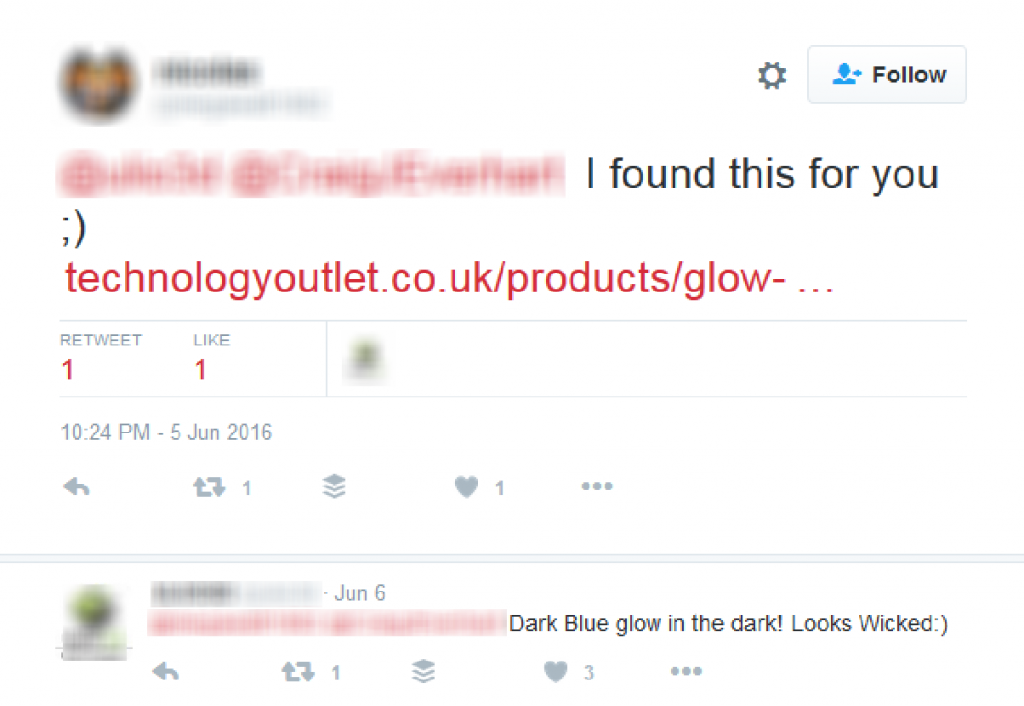
These extended engagements act as endorsements and make your loyal followers true brand advocates.
This, of course, extends your reach and will influence others.
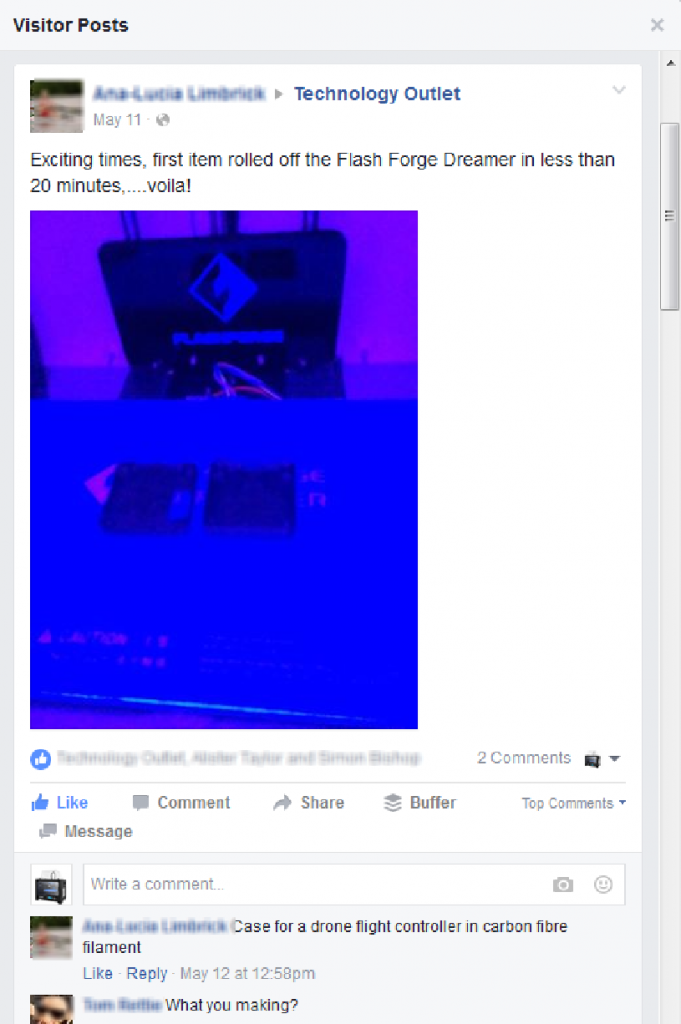
What metrics matter for building advocacy? Everything!
- Great product
- Prompt and courteous customer service
- Engaging social media
- Respecting the audience
- A rounded, enjoyable experience
Easier said than done, sure. With time, care, and attention these little wins add up to a larger positive impact that carries positive momentum and will prove incredibly difficult for your competitors to erode.
Zero to… the moon?
On a 3D printed spaceship of course!
In all seriousness, this is why I love my job as an agency owner and overseer. You get to cut through all the bull, the theory, and expert opinions – you get your hands dirty – and you deliver results from experience.
Heck – Twitter didn’t even drive any traffic before we started, now it converts in to sales!
This is what our final social media map looked like, feel free to use it for your campaigns:
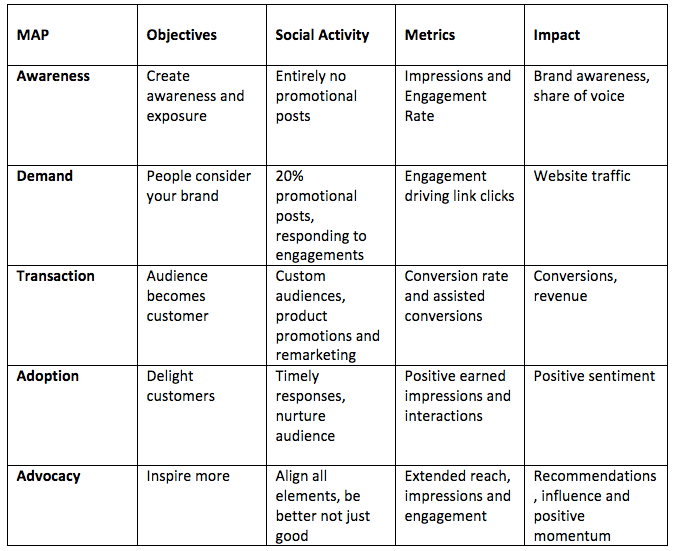
I’d love to hear your thoughts, comments and questions. Has this given you ideas to run your own social strategies – did I miss anything?






